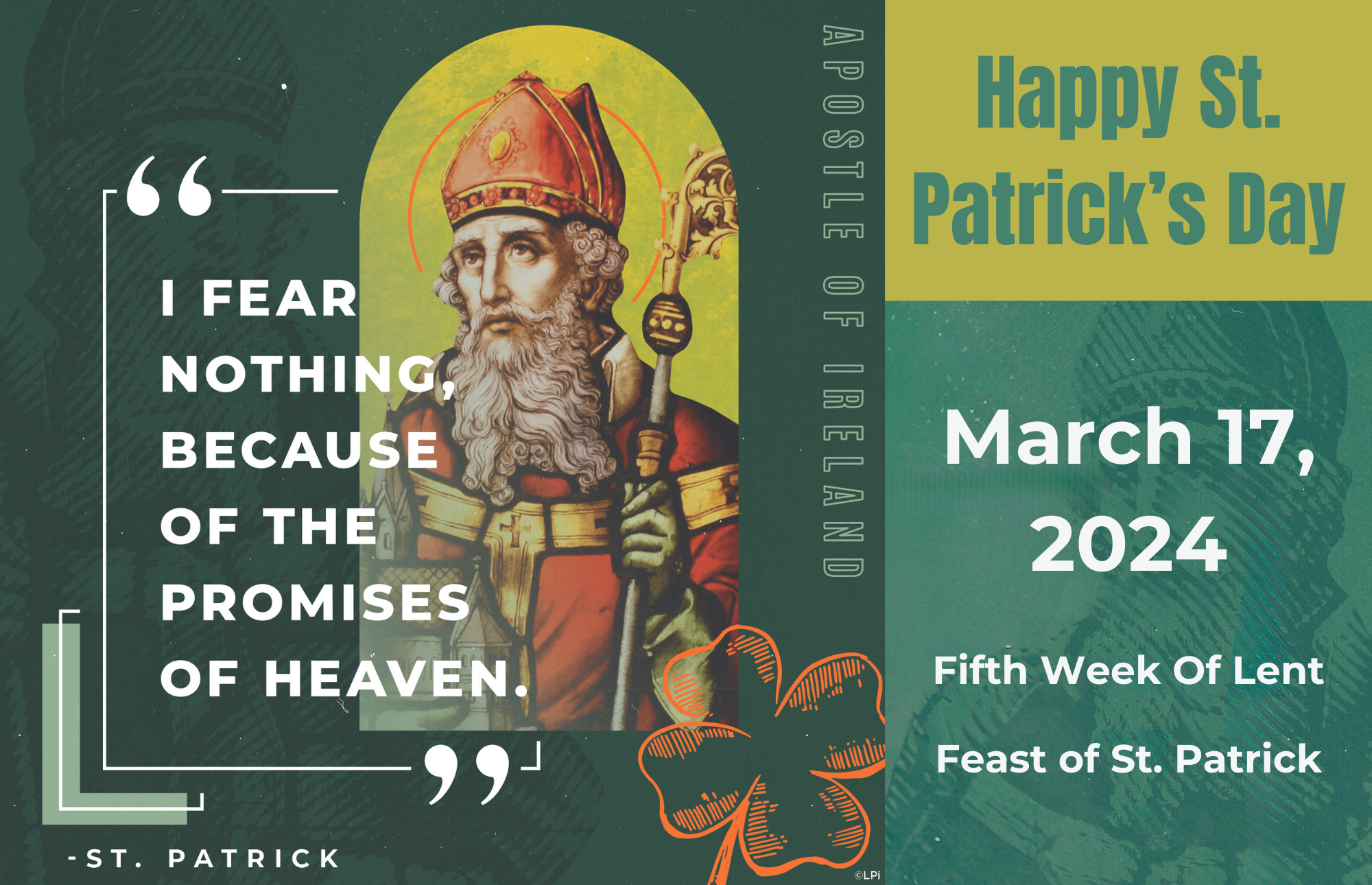Happy St. Patrick’s Day! This day always comes during Lent, but this year it is a Sunday, offering us a weekend of celebration and merriment. But who was St. Patrick, really? This is from an essay by John DeGree:
Saint Patrick is one of Christianity’s most well-known missionaries. Patrick was born in fourth century Roman Britain (c. 390-461) to a loving family of wealth. His parents were most likely successful merchants and administrators of the Roman Empire. In February of 380, Roman Emperor Theodosius issued the Edict of Thessalonica and declared the official religion in the empire to be the Catholic Church. Patrick was brought up in this faith.
At the beginning of the medieval ages, many in Europe clung to the pagan religions of the past. Ireland, the island to the west of Britain, was a land where Christianity was unknown. Celts in Ireland followed a belief called Druidism. They believed in many gods, and Druid priests had many practices that we would call barbaric. Druids sacrificed humans to keep their gods happy.
As a sixteen-year-old, it is said that Patrick snuck out of his parents’ home and took part in an all-night pagan ritual. Patrick was raised Catholic Christian, but as a young person, he strayed away from his faith and attended this pagan ritual. With dawn breaking, a small band of Irish pirates raided Britain and captured Patrick. He was taken to Ireland and sold into slavery, completely separated from his loving parents. Patrick wrote later that he had left the faith of his family, and for this he was being punished.
For six years, Patrick was enslaved in Ireland. At any instant, he could be killed, mutilated, or beaten by his owner. He was far from his home and far from any help his Christian friends could provide. Instead of becoming desperate and sad, though, Patrick spent his time in prayer and reflection. Working as a shepherd, he grew to love the Irish land and people, and yearned to one day teach them the Christian belief. He united his sufferings as a slave to the sufferings of his savior, Christ, and his love for his captors grew.
According to Patrick’s writings, he heard God speak to him and tell him to escape from slavery and to walk to the coast. A boat would be waiting for him. As a slave, if he were recognized, he would have been put to death! Patrick did as he was told, and there was a boat waiting for him. The captain agreed to take him back to Britain.
Patrick’s parents were so excited to see him, but they were also disappointed to hear what he wanted to do. He wanted to become a priest and return to the people who enslaved him in Ireland. His parents wanted him to get married, become wealthy and important, and raise a family. If he returned to Ireland, wouldn’t he be killed by his former slave owner for escaping? How could he have a family if he became a priest?

Patience is a virtue Patrick practiced. He went to Gaul (France), studied to become a priest, and waited for his calling to go back to Ireland and spread Christianity. At the age of 49, after about 25 years of waiting, he finally received the order to go to Ireland as a bishop to evangelize. He returned, went to his former slave owner, and spoke about Christ. Amazingly, within Bishop Patrick’s lifetime, Ireland became a Christian country! And, since this time Irish missionaries have travelled throughout the world spreading the news of Jesus and his Church.
There are many legends attributed to Patrick in Ireland. For example, some say he chased all the snakes out of Ireland, or that he used a three-leaf clover to explain the Trinity. But what is not legend is that within his lifetime, Ireland changed from a land of slavery, human sacrifice, and paganism, to a Catholic Christian land, where the slave trade came to a halt, and where murder and tribal warfare decreased.
Along with bringing Christianity to the Irish, Patrick established monasteries that some say saved Western civilization. In the Middle Ages, a monastery was a place where men lived and worshipped, served as doctors and nurses, fed the poor, took care of orphans, and copied important documents. It was the only place of learning in the first centuries after the Roman Empire fell. As Roman law and order gave way to chaos, Irish monks kept working, copying classic texts of the west, and spreading Christianity. For centuries after Patrick died, Irish monks spread both the Christian faith and the classics. It is for this that some historians claim that St. Patrick saved Western Civilization.


